|
Play List: 4. Corinne 7. The Mormons 9. Lucy Brandon 10. Storm-Beaten 11. Lady Clare 13. Bachelors 14. Constance 15. Lottie 16. Agnes 17. Alone in London 18. Sophia 19. Fascination 20. The Blue Bells of Scotland 21. Partners 24. Angelina! 25. The Old Home 26. A Man’s Shadow 27. Theodora 29. Clarissa 30. Miss Tomboy 32. Sweet Nancy 33. The English Rose 36. Marmion 37. The Gifted Lady 38. The Trumpet Call 39. Squire Kate 40. The White Rose 42. The Black Domino 44. The Charlatan 45. Dick Sheridan 47. Lady Gladys 48. The Strange Adventures of Miss Brown 49. The Romance of the Shopwalker 52. Two Little Maids from School ___ |
|
ROBERT WILLIAMS BUCHANAN (1841 - 1901) |
|
|
|
|
|
|
|
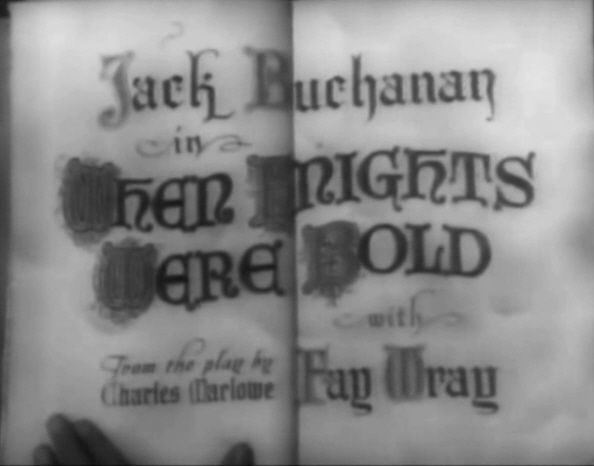 |
|||||||||||
|
The 1936 version of When Knights Were Bold is available here. |
|||||||||||
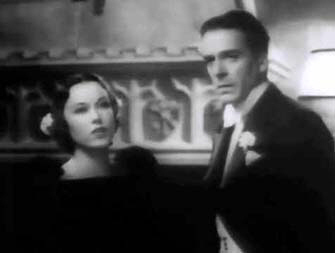 |
 |
||||||||||
|
Fay Wray and Jack Buchanan. Fay Wray as Lady Rowena. Jack Buchanan as Sir Guy in full armour. |
|||||||||||
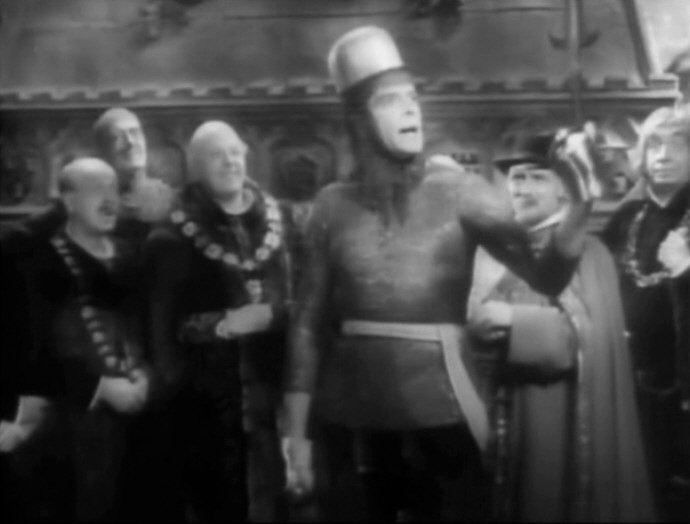 |
|||||||||||
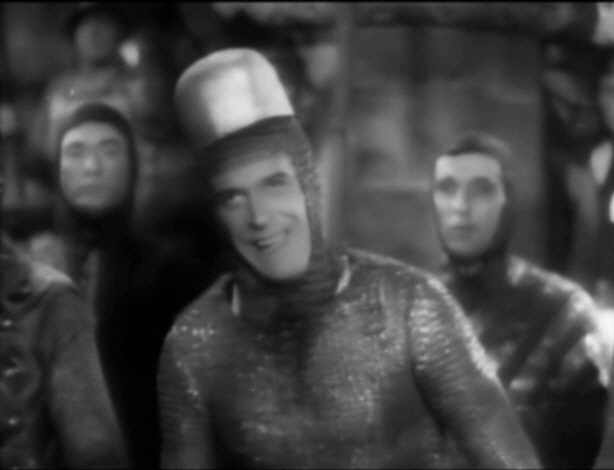 |
|||||||||||
|
The 1936 film contained several musical numbers: ‘I’m Still Dreaming’ and ‘Let’s Put Some People To Work’ by Al Goodhart, Al Hoffman and Maurice Sigler, and ‘Forward, Onward We Go’. Jack Buchanan singing “Lets Put Some People To Work” from When Knights Were Bold. ___
The Daily Mirror (31 October, 1935 - p.8) |
|||||||||||
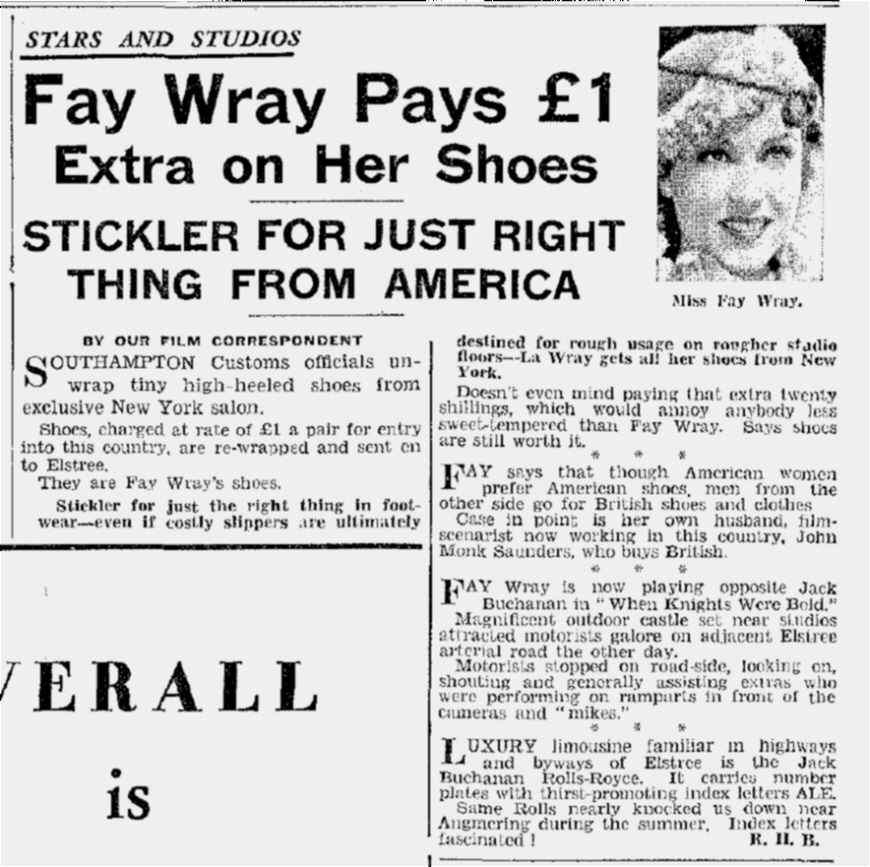 |
|
Picturegoer Weekly (14 December, 1935 - p.34) |
||||||||||||||||||||||||||||||||||||
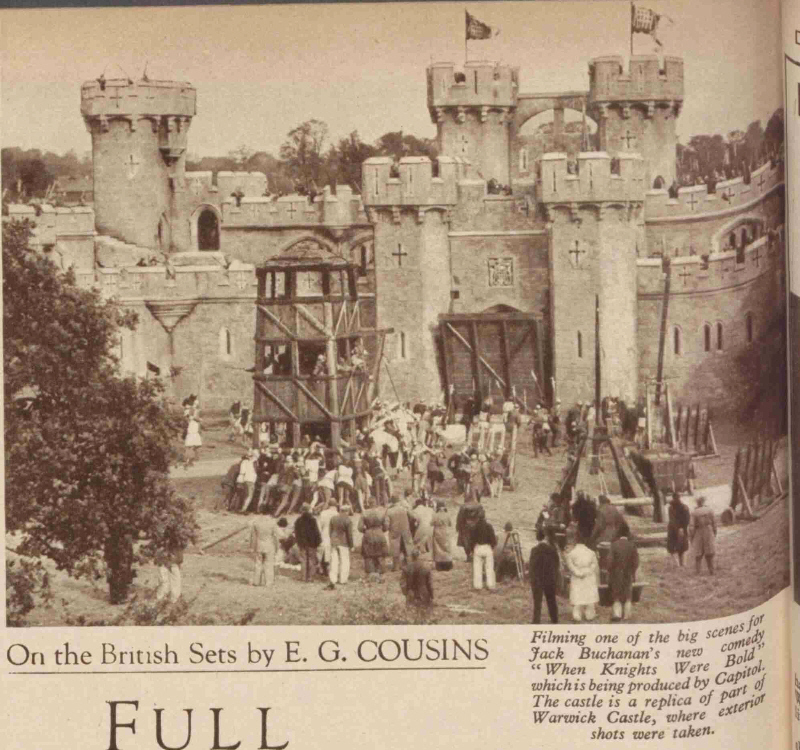 |
||||||||||||||||||||||||||||||||||||
|
(p.36) [Only one item concerning When Knights Were Bold, but there’s some other interesting bits on this page.] |
||||||||||||||||||||||||||||||||||||
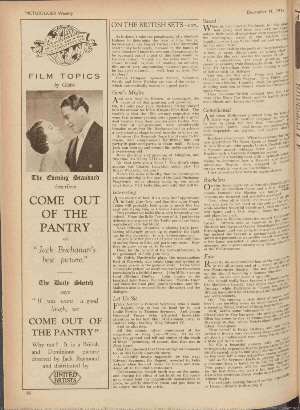 |
||||||||||||||||||||||||||||||||||||
|
Picturegoer Weekly (18 January, 1936 - p.31) |
||||||||||||||||||||||||||||||||||||
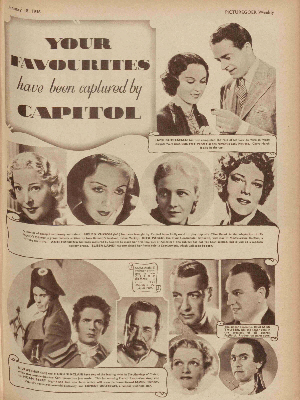 |
||||||||||||||||||||||||||||||||||||
|
The Illustrated Sporting and Dramatic News (21 February, 1936 - p.34) |
||||||||||||||||||||||||||||||||||||
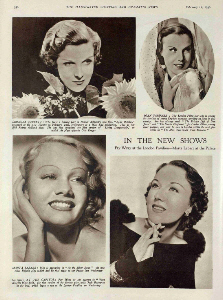 |
||||||||||||||||||||||||||||||||||||
|
(p.41) |
||||||||||||||||||||||||||||||||||||
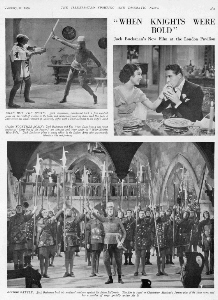 |
||||||||||||||||||||||||||||||||||||
|
Daily Express (21 February, 1936 - p.4) |
||||||||||||||||||||||||||||||||||||
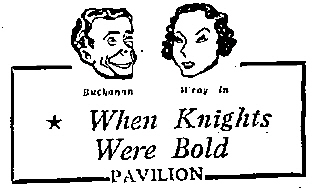 |
||||||||||||||||||||||||||||||||||||
|
ANYTHING this local farmyard product has it owes to the presence of Jack Buchanan. ___
The Times (24 February, 1936 - p.10) LONDON PAVILION ___
The Illustrated Sporting and Dramatic News (24 April, 1936 - p.35) |
||||||||||||||||||||||||||||||||||||
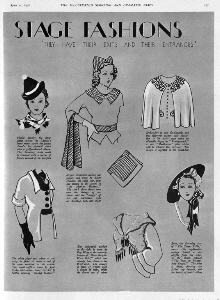 |
||||||||||||||||||||||||||||||||||||
|
Evening Post (Wellington, New Zealand) (4 July, 1936) TIVOLI THEATRE With the coming of every Buchanan picture to the screen, the public are immediately on tip-toe with expectancy for some new, real song hits, and they will certainly not be disappointed in Jack’s latest success, “When Knights Were Bold,” which is the main attraction at the Tivoli Theatre. Two of the numbers which enhance the entertainment value of the film are “I’m Still Dreaming” and “Let’s Put Some People to Work,” sung in Jack’s own inimitable breezy style. “When Knights Were Bold” gives an intimate glimpse of Buchanan’s own favourite style of acting, as the producers, Capitol Films, gave him free rein in selecting the story for this, his first “World Standard” production, and he has chosen a mirthful mix-up, brimful of laughs, riotously funny situations, spicy interludes, and catchy songs. The exploits of a New York star reporter who assists the police in solving a mysterious crime, only to find himsslf in jeopardy, are vividly depicted in the second feature, “The Murder Man,” starring Spencer Tracy, with Virginia Bruce, Lionel Atwill, Harvey Stephens, and Robert Barratt. ___
Picturegoer Weekly (12 September, 1936 - p.28) ** WHEN KNIGHTS WERE BOLD General Film Distributors. British. “U” certificate. Comedy burlesque. Runs 75 minutes. JACK BUCHANAN..........................................Sir Guy de Vere Directed by Jack Raymond. Previewed March 7 1936. Since this farce was first staged, twenty-nine years ago, it has become as internationally famous as Charley’s Aunt, and few people do not know the story of Sir Guy de Vere, who finds himself back in the Middle Ages and has many hilarious adventures with the people whose lineal descendants are his own friends and contemporaries. ___
Picturegoer Weekly (23 October, 1937 - p.13) [An article about Jack Raymond, the director of the 1936 version of When Knights Were Bold.] |
||||||||||||||||||||||||||||||||||||
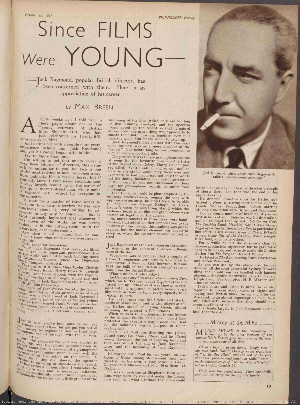 |
||||||||||||||||||||||||||||||||||||
|
The New York Times (31 March, 1942) THE SCREEN Ancient Accident WHEN KNIGHTS WERE BOLD, adapted by Douglas Furber and Austin Parkes from the play by Charles Marlowe; directed by Jack Raymond; produced in England by Capitol Films. At the Little Carnegie Playhouse. Sir Guy de Vere . . . . . Jack Buchanan By BOSLEY CROWTHER The Little Carnegie Playhouse refuses to let cold turkeys lie, and again it has raided the ice-box for another relic from a British studio, which it is offering to local audiences as though it were just grabbed off the roost. You may rest assured it wasn't. It is all of six years old—this exceedingly moldy farce-comedy entitled “When Knights Were Bold”—and the only cleverness which it betokens is that of the exhibitors who have previously passed it up. ___
New York Post (31 March, 1942 - p.11) Movie Talk “When Knights Were Bold” A Capitol Picture. Directed by Jack Raymond. Screenplay by Douglas Furber and Austin Parkes. From the play by Charles Marlowe. THE CAST: “The amazing thing,” writes the Little Carnegie Playhouse in its current program, “is not that beleaguered Great Britain is continuing to turn out films, despite war-time difficulties, but that they can be so light-hearted and gay, so full of that irresistible spirit that says ‘Yes’ to life that must ultimately confound their enemies. An arch-typical example of this is Jack Buchanan’s latest musical screen comedy, ‘When Knights Were Bold,’ etc.” ___
The New York Sun (31 March, 1942 - p.23) The New Movie ‘When Knights Were Bold,’ Dreary English Farce. By EILEEN CREELMAN. Humor, even more than romance, is highly perishable. It differs so markedly in different countries that attempts to transport it are often disastrous. The Little Carnegie Playhouse now is showing one of these lesser disasters, “When Knights Were Bold.” This is typical English musical comedy fun. In the United States it seems merely silly. |
||||||||||||||||||||||||||||||||||||
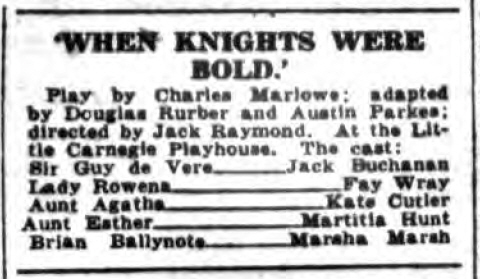 |
||||||||||||||||||||||||||||||||||||
|
Grahame N’s Web Pages has some additional information about the film, and there’s a review on Dave Sindelar’s Fantastic Movie Musings and Ramblings site: “The heir to an ancestral home returns from India to meet his family for the first time. He discovers they are all stiff and joyless, but he falls for his cousin, the Lady Rowena.You know, some of these movies really do leave me scratching my head when I try to decide whether they rightfully belong in the fantastic movie genres or not, and this is one of them. The basic plot of this musical-comedy certainly doesn't give any indication of having a fantastic premise, and for most of the movie I was wondering what would come up. However, the last third of the movie consists of a dream sequence in which our hero ends up in the middle ages and must defend the castle against an onslaught of invaders. It's here that the comedy really takes an anarchic turn, and the question becomes whether outrageous anarchic comedy qualifies as fantastic cinema. However, scenes in which the knights come riding in on bizarre bicycles, and a series of gags involving magnets both push this into the realm of fantasy, so I guess it does qualify to some extent. The movie itself is quite amusing and very British. Barry Fitzgerald and Terry-Thomas both appear somewhere in this movie, though I wouldn't be able to point them out.” I also came across the following in the William K. Everson Archive at the New York University. It’s a copy of the programme notes for a showing of the film on September 28th, 1970 at the Theodore Huff Memorial Film Society: |
||||||||||||||||||||||||||||||||||||
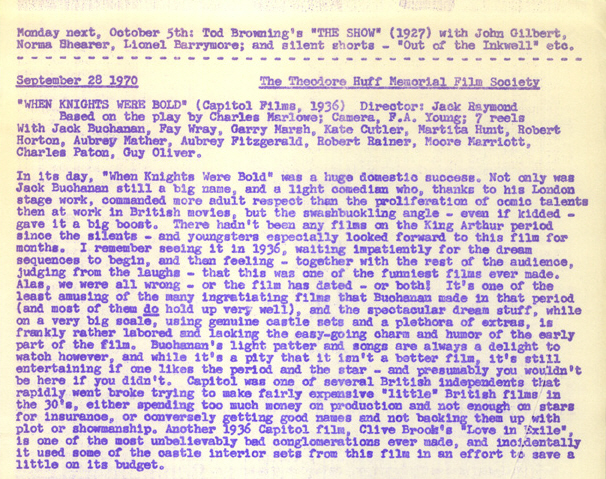 |
||||||||||||||||||||||||||||||||||||
|
In Fay Wray’s autobiography, On The Other Hand, the film is mentioned in the following passage: “A second film with Jack Buchanan was produced by Herbert Wilcox, who arranged the very best contract I ever had. It was totally uncomplicated, not a ‘whereas’ or ‘in the event’ or any kind of legal phrasing. All on one page, it stipulated salary and billing only. Jack, of course, was to have billing over me. When the film, When Knights Were Bold, was finished and was about to be shown in Piccadilly Circus, Vincent Sheehan had come to town. He and John and I were en route to dinner at Boulestin’s in the Strand. I saw workmen putting up lights on the huge marquee of the theater, my name on top of everything. I knew that was wrong but I enjoyed my dinner thoroughly. I had never had a French red wine before: Nuit Saint George. A lovely nuit for me! By the time we passed the theater on our return taxi ride, my lovely nuit was over. Jack Buchanan’s name was up there where mine had been. I wondered if he, too, might have been dining in the Strand that night!” |
||||||||||||||||||||||||||||||||||||
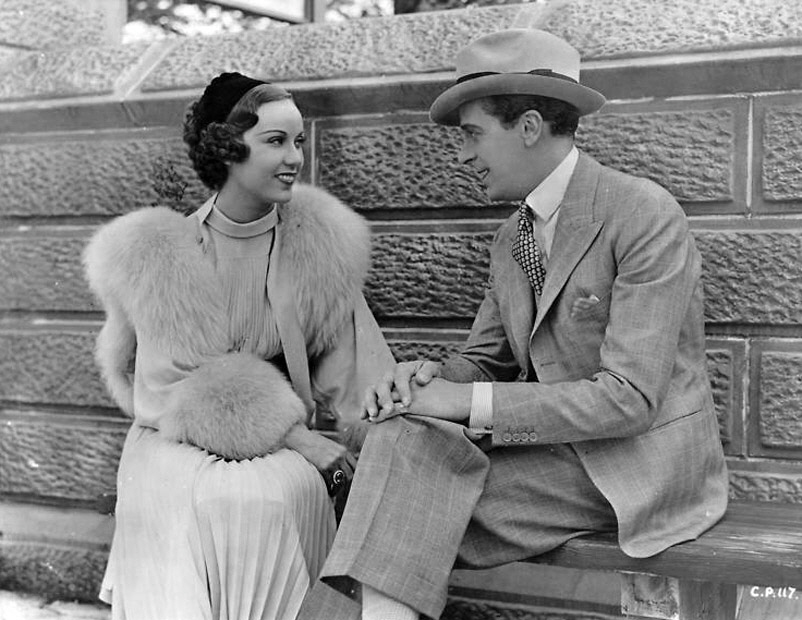 |
||||||||||||||||||||||||||||||||||||
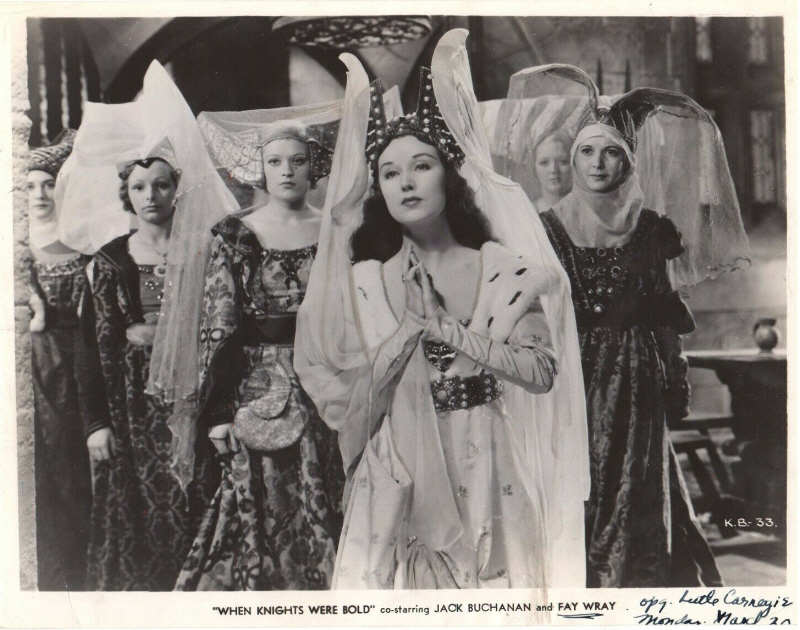 |
||||||||||||||||||||||||||||||||||||
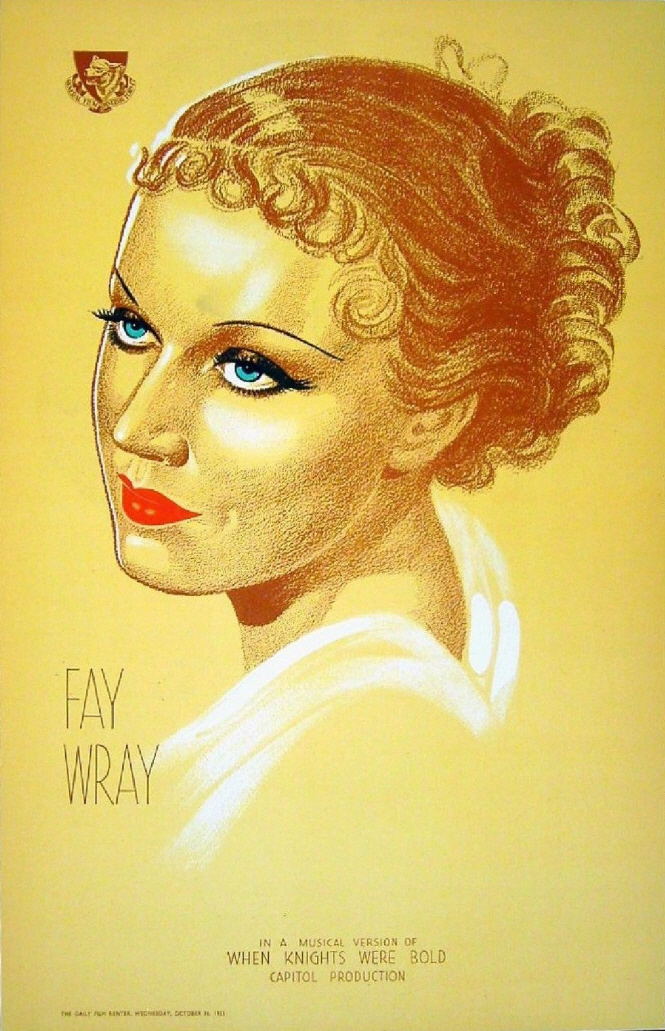 |
||||||||||||||||||||||||||||||||||||
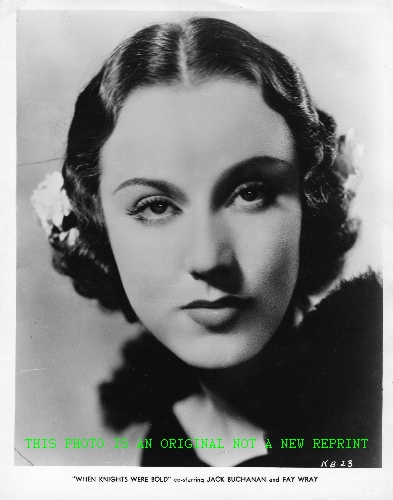 |
||||||||||||||||||||||||||||||||||||
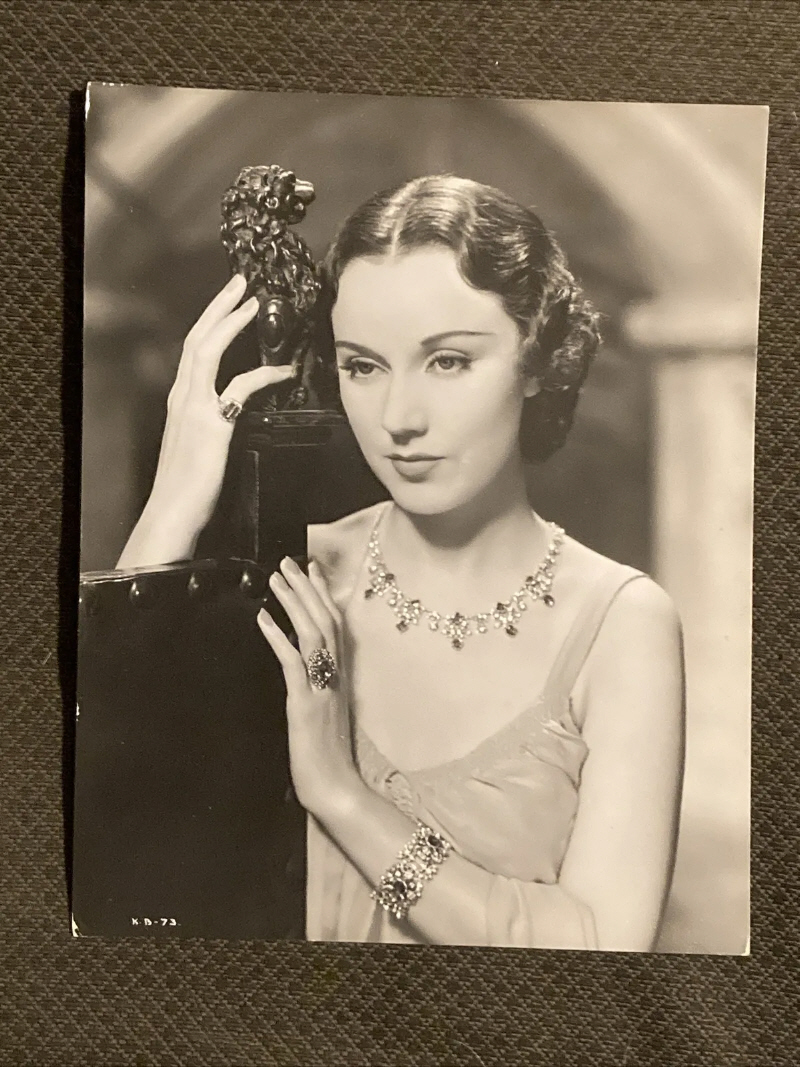 |
||||||||||||||||||||||||||||||||||||
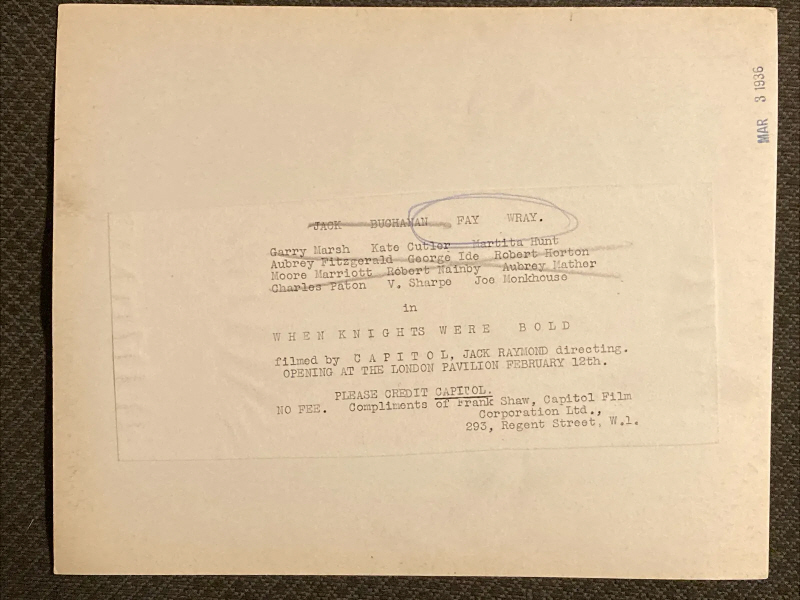 |
||||||||||||||||||||||||||||||||||||
|
Swedish poster for Bland Balde Riddersman designed by Gosta Aberg (1905-1981): |
||||||||||||||||||||||||||||||||||||
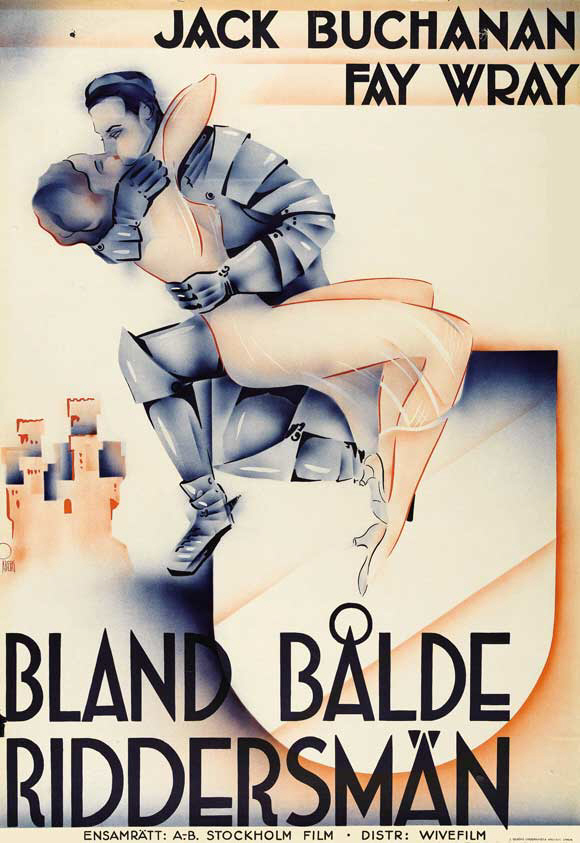 |
||||||||||||||||||||||||||||||||||||
|
Spanish posters for Frac en la Edad Media (“A Tailcoat in the Middle Ages”): |
||||||||||||||||||||||||||||||||||||
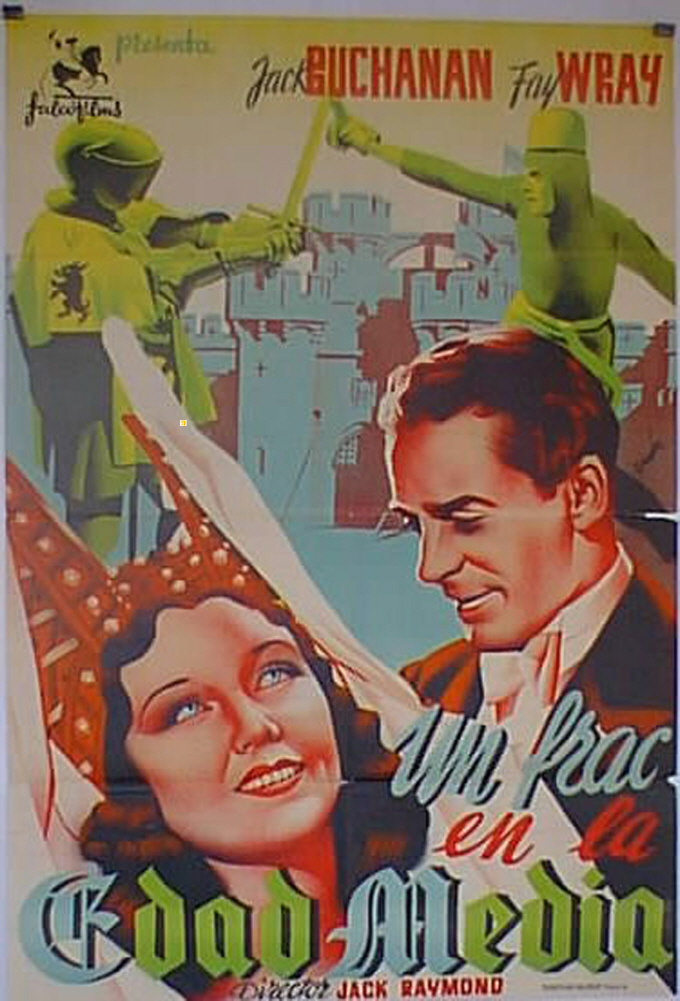 |
||||||||||||||||||||||||||||||||||||
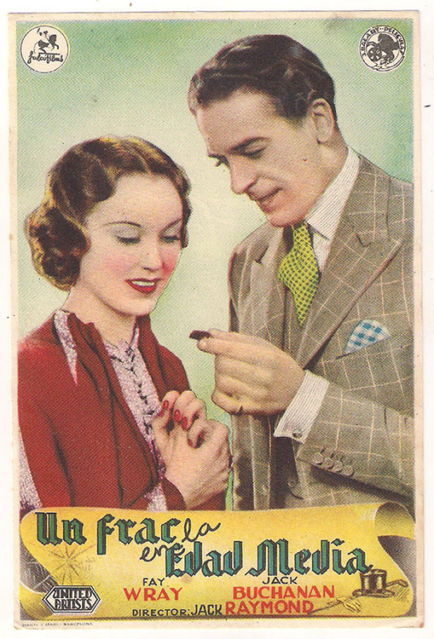 |
||||||||||||||||||||||||||||||||||||
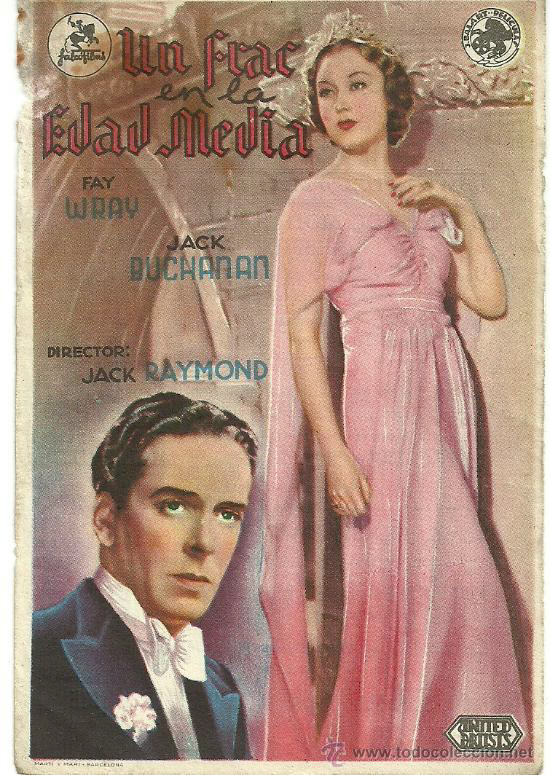 |
||||||||||||||||||||||||||||||||||||
 |
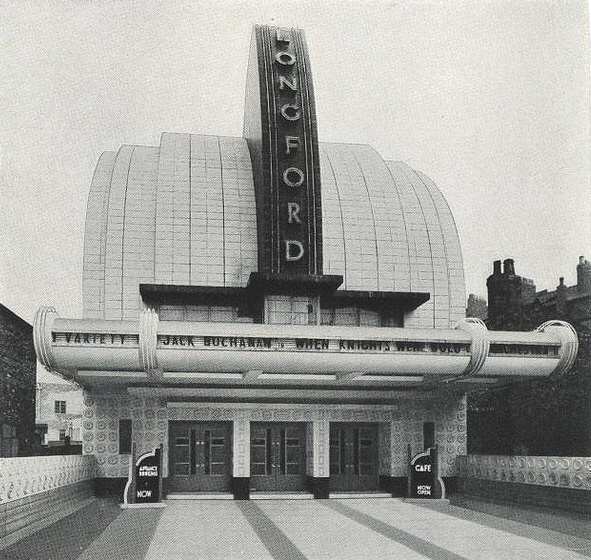 |
 |
|
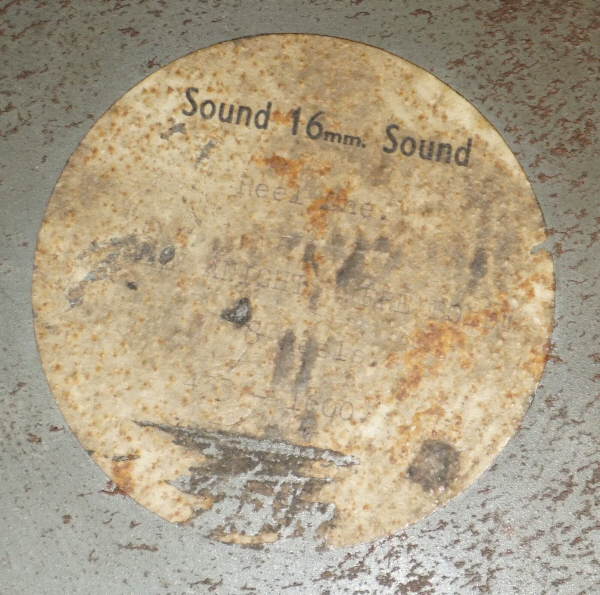 |
|
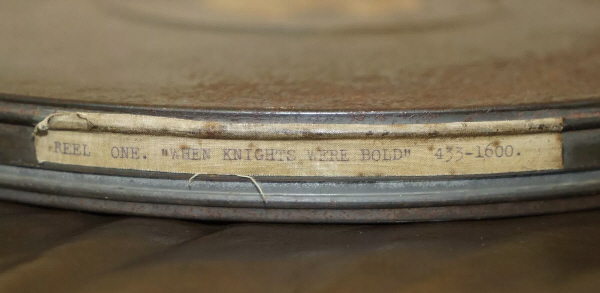 |
|
 |
|
|
From the seller’s description: ‘Royal House Antiques is delighted to offer for sale this super rare pair of original 16mm Sound Reels playing the 1936 movie “When Knights Were Bold” reel 1 and 2. Dimensions When Knights Were Bold is a 1936 British musical comedy film directed by Jack Raymond and starring Jack Buchanan, Fay Wray and Garry Marsh.[1] Songs include "Let's Put the People To Work" sung by Jack Buchanan, "Onward We Go" sung by Buchanan & soldiers' chorus, and "I'm Still Dreaming" sung by Buchanan. ...’ _____
When Knights Were Bold - The Films continued or back to When Knights Were Bold main menu
|
|
|
|
|
|
|